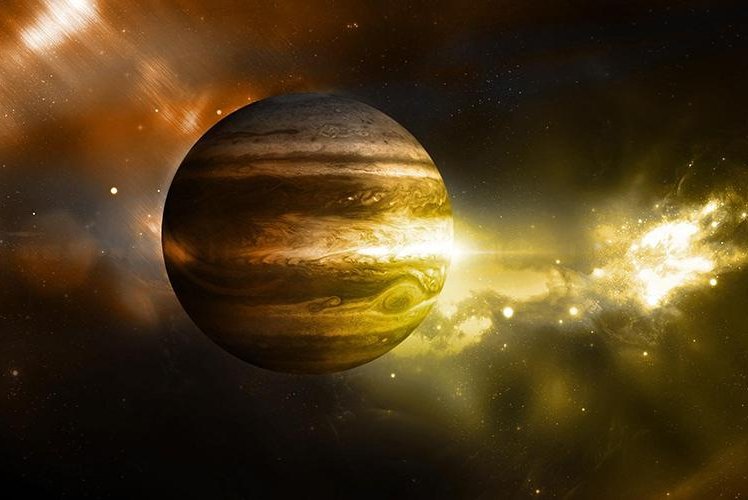New research suggests Jupiter is the oldest planet in the solar system, having formed between 1 and 3 million years after the formation of the solar system. Photo by NASA
June 13 (UPI) -- New evidence suggests Jupiter is the oldest planet in the solar system -- the first to form inside the sun's protoplanetary disk.
Analysis of tungsten and molybdenum isotopes in meteorites from two distinct nebular reservoirs suggest the orbital debris stocks permanently separated some 1 to 3 million years after the formation of the solar system.
"The most plausible mechanism for this efficient separation is the formation of Jupiter, opening a gap in the disc -- a plane of gas and dust from stars -- and preventing the exchange of material between the two reservoirs," Thomas Kruijer, a researcher at Lawrence Livermore National Laboratory, said in a news release on the lab's website. "Jupiter is the oldest planet in the solar system, and its solid core formed well before the solar nebula gas dissipated, consistent with the core accretion model for giant planet formation."
Simulations of the solar system's formation and evolution have predicted Jupiter was born first, but astronomers have been unable to put an exact date on the gas giant's birth.
The impressive mass and gravitational pull of Jupiter -- the largest planet in the solar system -- were influential for the formation of our planetary system. Dating Jupiter's formation will help astronomers build a more accurate timeline for the evolution of the early solar system.
Researchers believe Jupiter's early birth prevented the formation of any super-Earths -- especially large rocky planets. Jupiter's size created a barrier dissecting the sea of rocky debris orbiting the sun, preventing the movement of fresh material between the inner and outer solar system.
"Our measurements show that the growth of Jupiter can be dated using the distinct genetic heritage and formation times of meteorites," Kruijer said.
The solar system's main asteroid belt today is found between Mars and Jupiter, but in the early solar system, rocky belts were likely more spread out.
Kruijer and his colleagues published their analysis in the journal PNAS.















